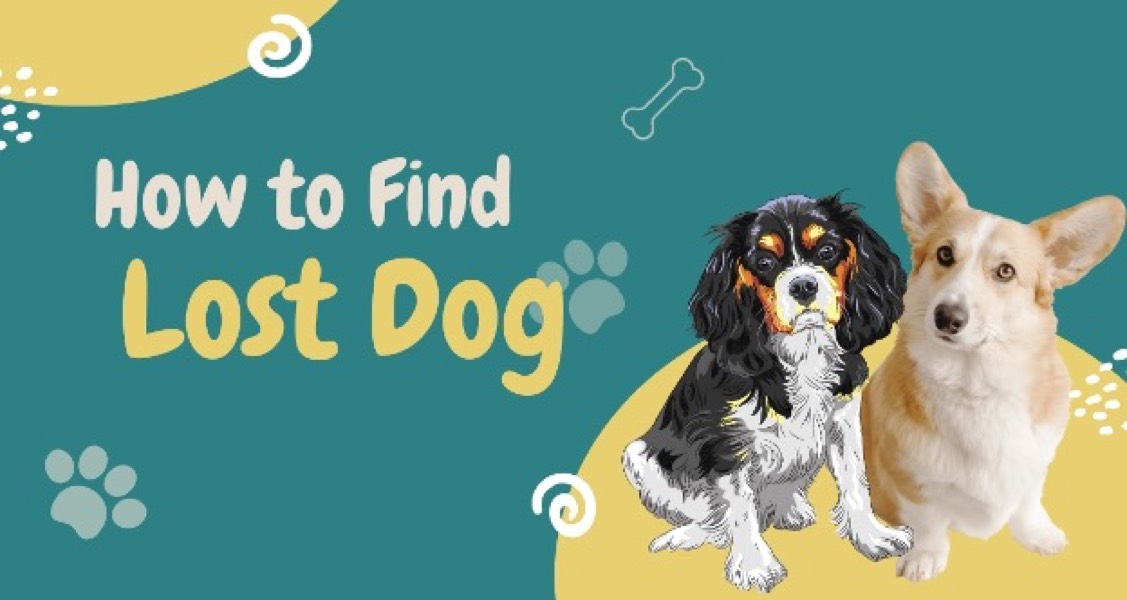Losing a dog is a heart-wrenching experience that can leave any pet owner feeling desperate and helpless. The sudden absence of a beloved furry friend creates a void filled with worry and fear. But take a deep breath; finding a lost dog often requires a systematic approach, patience, and persistence. This guide will walk you through 10 essential steps to help reunite you with your lost pet.
1. Conduct a Thorough Home Search
Before you panic, start with a thorough search of your home and surrounding property. Dogs are notorious for hiding in unexpected places, especially when they are scared. Check under beds, in closets, behind furniture, and in any small spaces they could squeeze into. Don’t forget to inspect your yard and any outbuildings like sheds or garages. Call out your dog’s name calmly and listen for any sounds they might make in response. Sometimes, dogs can get trapped in tight spots or locked in rooms by accident.
2. Get the Word Out in the Neighborhood
Once you’ve confirmed your dog is not at home, it’s time to alert your neighbors. Knock on doors, talk to people walking by, and let everyone know your dog is missing. Describe your dog in detail, including their breed, color, size, and any distinctive markings. Provide a recent photo if possible. Ask neighbors to check their garages, sheds, and underdecks, as dogs can sometimes hide in these areas. The more people who know about your lost dog, the better the chances of someone spotting them.
3. Produce and Hand Out Flyers
Create eye-catching flyers with a clear photo of your dog, their name, and your contact information. Include details like breed, color, distinctive markings, and any other identifying features. Distribute these flyers in high-traffic areas such as community centers, parks, and local businesses. Don’t forget to place them on community bulletin boards, near schools, and in veterinary offices. Offering a reward can also motivate people to keep an eye out for your dog.
4. Speak with Nearby Animal Shelters and Veterinary Clinics
Visit local animal shelters and veterinary clinics to see if your dog has been brought in. Leave them with a flyer and your contact information. Many shelters and clinics keep records of lost and found pets, so it’s crucial to keep checking back regularly. Provide them with a detailed description of your dog and ask if they can alert you immediately if a dog matching your pet’s description is brought in.
5. Make Use of Social Media Platforms
Social media can be a powerful tool for finding a lost dog. Post on your own profiles and ask friends to share. Join local community groups, pet recovery pages, and neighborhood forums to spread the word. Provide a detailed description of your dog and ask people to contact you if they have any information. Use relevant hashtags like #LostDog and include your city or neighborhood to reach a wider audience. Regularly update your posts to keep the information fresh and visible.
6. Post on Websites for Lost and Found
There are several websites dedicated to finding lost pets with their owners. Post on sites like PawMaw and local lost and found pet websites. Be sure to check these sites frequently, as someone may have found your dog and posted their information there. Include a clear photo and detailed description of your dog, as well as your contact information. The more places you post, the higher the chances someone will see your lost dog.
7. Employ Microchip Data and GPS
If your dog is microchipped, contact the microchip company immediately to report them as lost. Ensure your contact information is up-to-date. Some microchip companies offer additional services to help locate lost pets. If your dog has a GPS collar, use the tracking app to pinpoint their location. Even if the GPS signal is weak or intermittent, it can give you a general idea of where to search.
8. Set Up Security Cameras
Setting up security cameras around your home or the last known location of your dog can help monitor any activity. Motion-activated cameras are especially useful as they will record any movement and send alerts to your phone. This can provide clues about your dog’s whereabouts or if they are returning to a familiar spot. Reviewing footage can reveal the direction your dog is heading and help you plan your search accordingly.
9. Assign Teams to Search
Organize search parties with friends, family, and volunteers. Assign specific areas for each team to cover, ensuring a thorough search. Bring along items that may attract your dog, like their favorite toy or treats. Remember to search during different times of the day, as dogs might move around more in the early morning or late evening. Provide each team with a map and a way to communicate, such as walkie-talkies or mobile phones.
10. Locate a Lost Dog After Dark
Dogs can become more active at night when it’s quieter. Take a flashlight, their favorite squeaky toy, and some treats. Listen carefully for any sounds, and call out their name calmly. Be cautious and attentive, as your dog may be scared and disoriented. Nighttime searches can be more effective in quieter areas where your dog might feel safer to come out of hiding. Make sure to wear reflective clothing and carry a flashlight for visibility and safety.
Wrapping Up
Finding a lost dog requires a combination of effort, strategy, and community involvement. While it’s a distressing time, staying calm and methodical can make a significant difference. By following these steps and enlisting the help of others, you increase the chances of a joyful reunion with your furry friend. Remember, persistence is key, and never lose hope. Your dog is counting on you to bring them back home safely.







